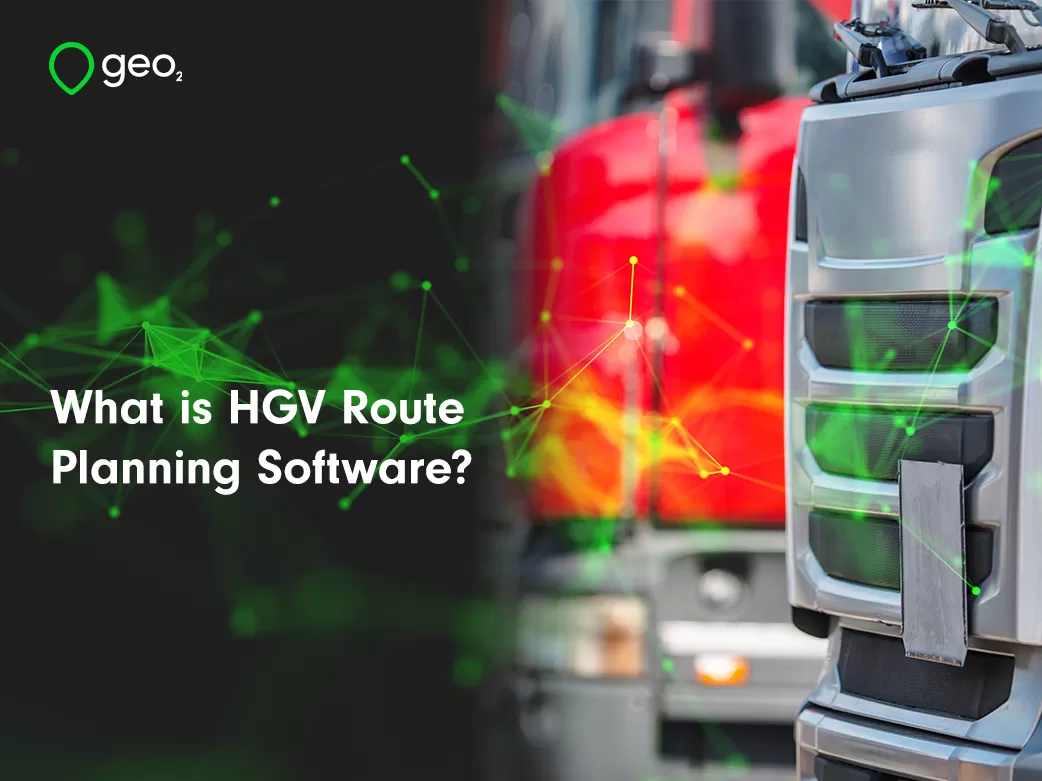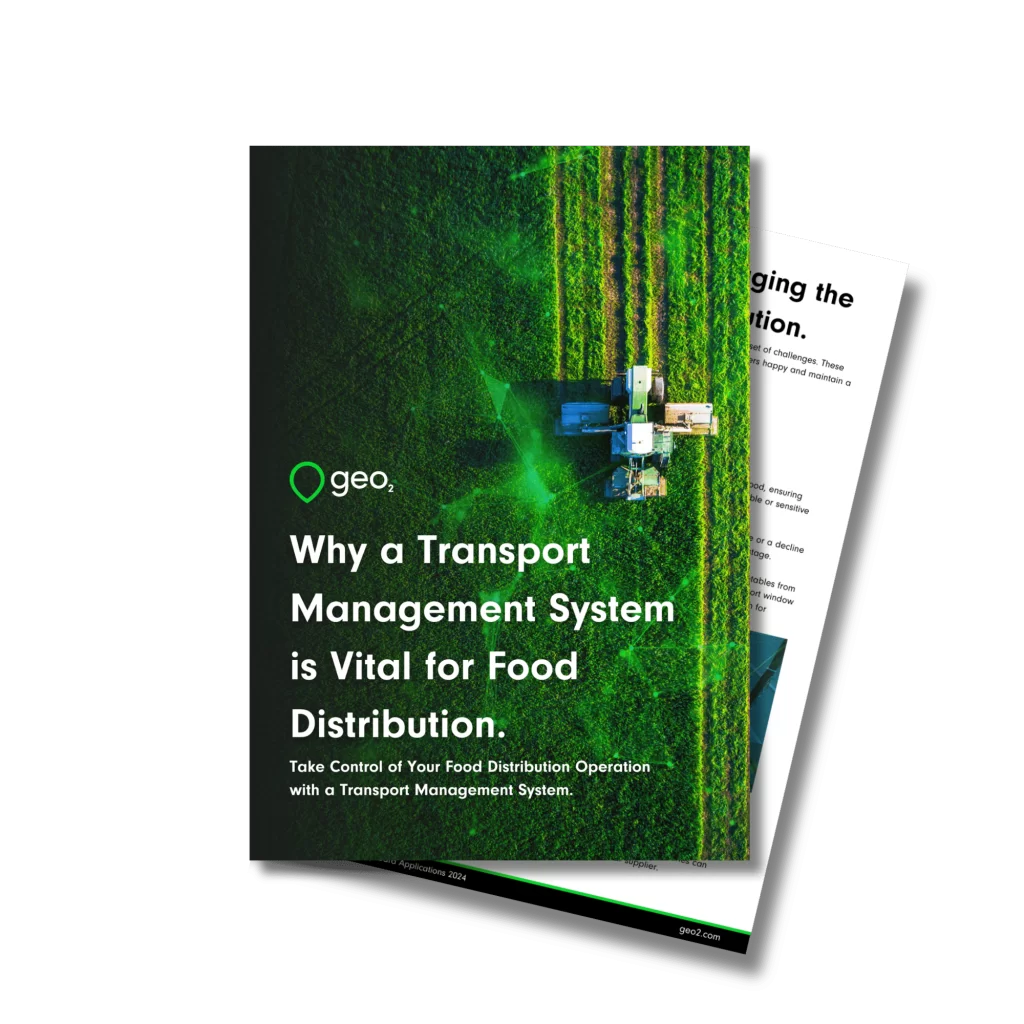
Need It For Later?
Download Now.
Why a Transport Management System is Vital for Food Distribution.
Introduction.
Food distribution businesses have many critical operational activities that need effective management if they are to thrive in an increasingly complex and competitive market.
- First, they must accurately plan and forecast, so that stock levels meet customer demands.
- Then, within the warehouse, they need to store and manage their goods correctly, meeting use by dates and managing shelf lives.
- Next, orders must be picked accurately and packaged well, so that they can be quickly dispatched.
- Finally, with their own fleets to manage, their goal is to ensure quick, accurate and profitable deliveries, all while adhering to stringent regulations and maintaining food quality from warehouse to customer.
Juggling these intricate operations requires precise coordination of warehousing, stock management and logistics.
On top of those pressures, the industry has some additional tough challenges. Such as:
- Adverse weather conditions
- Geopolitical wars and crises
- Disruptions such as the Covid pandemic.
These all add layers of complexity, introduced inflationary pressures and cause volatility in the food supply chain.
These factors have strained the management of food distribution, often resulting in inefficiencies and raised
costs. To navigate these challenges and enhance operational efficiency, food distribution businesses are
increasingly turning to Transport Management Systems (TMS). A TMS offers a robust solution that improves the food supply chain through increased visibility, optimised route planning and better regulatory compliance. Using a TMS also results in more timely deliveries, which enhances customer satisfaction and protects margins. By integrating a TMS, distributors can manage the complexities and unique dynamics of the food sector, while sustaining profitability and ensuring competitiveness in a challenging industry.
Table of Contents.
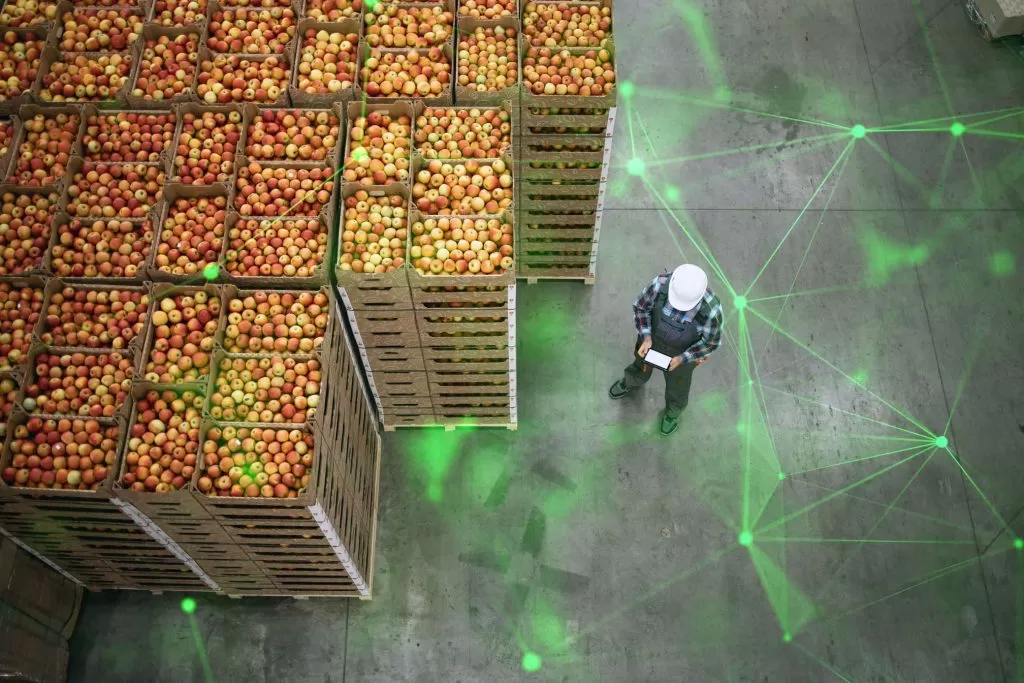
Key Challenges of Managing the Logistics for Food Distribution.
Managing each part of the logistics process of any food business brings its own set of challenges. These are the main hurdles that food distributors face as they endeavour to keep customers happy and maintain a smooth-running and profitable delivery operation.
Achieving High On-Time Delivery Rates.
All distributors need to meet the basic expectation of delivering orders quickly. But with food, ensuring timely deliveries is often more pertinent since the products being handled can be perishable or sensitive to delays.
It’s imperative that food products arrive in optimal condition. Any delay can lead to spoilage or a decline in freshness on arrival, which can significantly impact customer satisfaction and increase wastage. Timelines are often very tight, too. Take for example a business that sends fresh fruit and vegetables from Europe to the Far East. Once the goods have been handled and transported, there is only a short window of time after arrival for the local customer to use the produce before it is no longer fresh enough for consumption.
Not only do damaged products affect profitability, but they also contribute to environmental waste and sustainability issues. Food that is spoiled or expired cannot be used and must be discarded. Ethical distributors will seek to optimise their delivery systems to prevent this sort of waste.
To ensure satisfaction, distributors need to meet customer expectations. For example, a retail outlet might want to receive orders early in the day so that it can prepare for business hours. Late deliveries can disrupt their operations and will impact how loyal they remain to that particular supplier.
It can be a challenge for a distributor to meet a tight delivery window when external factors such as traffic or logistical setbacks come into play. Without real-time traffic data or delivery status updates, distributors that are unable to track their fleets lack visibility into their operations. This impacts real-time decision-making, making it harder to hit narrow delivery windows.
Getting deliveries to customers on time involves complex route planning. Distributors will often rely on manually organising their routes, which can be a time-consuming and error-prone process. While tools like Google Maps can help, they may not always offer the most efficient or logical routing for multiple deliveries. Manually plotted routes therefore often fail to account for variables such as real-time traffic conditions or the logical sequence of stops based on delivery windows.
This results in routes that are often less efficient and more prone to delays. In turn, this leads to increased fuel and time costs – and a higher likelihood of delayed deliveries, which will negatively impact customer satisfaction.
Ensuring Food Distribution Safety and Regulatory Compliance.
Ensuring food safety is vital in food distribution. Compliance with regulatory standards and the ability to trace deliveries through the supply chain are legal requirements. They are also critical in maintaining public health and consumer trust. There are severe consequences for not adhering to food safety standards. The inconvenience and costs associated with product recalls are only the start; legal penalties, adverse press coverage and damage to a company’s reputation can follow – and can be even more costly.
Proper management of recalls is essential. In a recall situation, a distributor needs to be able to quickly identify and locate the affected items across its supply chain. The ability to trace which goods were sent where, along with having proof of delivery, helps speed up this process. This limits prolonged exposure to unsafe products in the market and therefore mitigates the risks of health issues for end consumers and the subsequent fallout that could bring.
Maintaining Margins and Profitability.
Maintaining profitability in food distribution is a constant challenge. Margins on food products are typically low. Yet the costs associated with distribution are substantial. So, any inefficiencies in the delivery operation will quickly erode a company’s profits.
Many distribution processes are still manual, including importing and exporting files, planning routes, invoicing and handling customer delivery queries. These tasks are time-consuming, taking up a lot of employee time. Plus, because they are manual, they are prone to error, which can increase operational costs and decrease efficiency.
Running a paper-based delivery operation is also expensive. Even small companies can find themselves spending tens of thousands of pounds annually on paper, not to mention the added risk of data loss and the inefficiencies inherent in paper-based systems.
Incorrect or late deliveries often result in the need to issue refunds. With the often short shelf lives of food and drink products, speed of delivery is crucial if a company wants to avoid costly refunds for delivering spoiled goods. Reimbursement costs, coupled with the potential loss of customer trust and future business, can significantly impact profitability.
Managing a fleet is vital for many food distributors as they can maintain control over the delivery process. But this calls for adequate and timely checks of the fleet. Without these, there can be more significant mechanical issues down the line. Repairs can be costly, but more importantly, vehicles that need to be kept off the road for repairs cost the business money as they are not available to make deliveries.
One of the largest costs for food distribution operation is fuel. Vehicles stuck in traffic or following non-optimal routes consume more fuel and incur higher operational costs. Fuel inefficiency not only impacts the bottom line, but also contributes to greater environmental impact through higher emissions. Without the ability to optimise routes or make on-the-road traffic avoidance decisions, travel distances increase and costs can rapidly soar. This also makes the distribution operation less eco-friendly and less economically sustainable.
Managing Seasonality and Peak Periods.
Managing the fluctuating demands brought on by seasonality and peak periods can be a challenge. Supermarkets, for example, will ship considerably larger quantities of food during the run-up to periods like Christmas and Easter. Those distributors that grow and sell fresh produce face similar surges during harvest seasons. This ebb and flow in demand requires a flexible distribution strategy that can efficiently scale up or down to meet the changing requirements.
As demand can vary greatly depending on the time of year, distributors must anticipate and prepare for these fluctuations. To avoid shipments being delayed or being delivered in poor condition, distributors need to optimise the capacity of their delivery vehicles. Delays and delivery problems can mean financial penalties, deterioration of customer relationships and a loss of market competitiveness.
Preventing Fraudulent Delivery Claims.
As with consumer deliveries, fraud is also rife in business-to-business delivery operations. Without proof of delivery, it’s very easy for a recipient company to claim not to have received goods. This leads to the supplier having to refund or redeliver the order.
The implications have a greater impact in a business context, though, due to the nature of the transactions. The stakes are often higher, as they can involve larger volumes of goods and higher values. Despite contracts with detailed terms and conditions, disputes over whether goods have been received as per the agreement can still arise, potentially leading to claims for refunds or redelivery.
If goods have been received but not properly accounted for due to theft, then the blame might deceitfully be put on the distributor. As happens with consumer deliveries, dishonest individuals might be stealing goods, while claiming they were not received. If there’s no documentation to verify delivery, a dispute may be difficult to settle, leading to additional costs for the distributor.
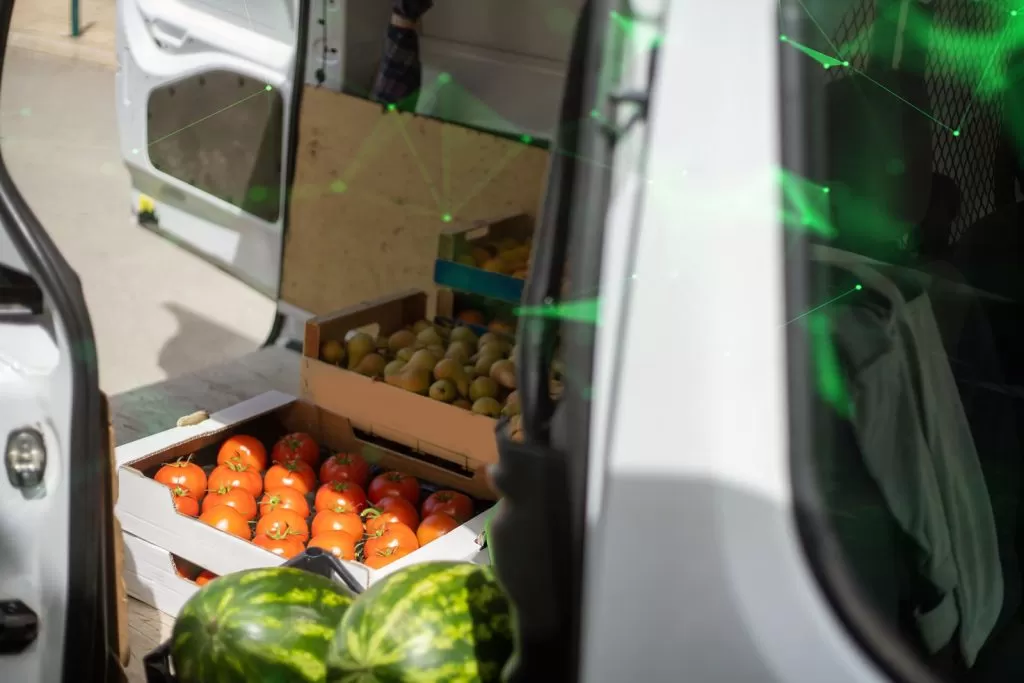
Using a TMS to Overcome the Challenges of Food Distribution.
If you’re a food distributor, overcoming these operational challenges will help you serve your customers better and bring you greater efficiency and profitability. By using a TMS such as Geo2, you can beat these kinds of disruptive issues.
From mitigating risks like spoiled food and vehicle breakdowns, to addressing the causes of inefficiencies like untraceable lorries and poor routing, a TMS can transform your food business, turning your logistical nightmares into streamlined processes.
Visibility and Transparency.
A TMS gives you greater control and oversight of your operation. Real-time tracking and updates supply the essential data that improves the visibility and transparency across your entire supply chain. This insight is invaluable in effectively managing complex logistics scenarios and delivering accurate reporting to stakeholders.
With GPS tracking, you can precisely monitor the location of your vehicles, making sure that deliveries are on schedule and alerting your managers to any issues or delays as they happen. This is particularly beneficial during peak times, when managing several vehicles and routes becomes even more complex.
Time Savings With Automatic Route Optimisation.
With streamlined route planning and optimisation, you can be more efficient and can reduce your costs.
Traditional methods, like manually plotting routes on Google Maps, are time-consuming and may not provide the most optimal routes. A TMS automates and refines this process, often eliminating hours of planning. Then, when they are out on the road, your drivers can take advantage of dynamic rerouting that helps them avoid traffic bottlenecks and get through their routes more quickly.
In addition, you can track your drivers live. This real-time monitoring of progress lets you make quick adjustments to routes and schedules as needed. With this level of route optimisation, your drivers will save time, meaning they can get through more deliveries every day. Plus, it minimises fuel consumption, bringing substantial cost reductions in what is a significant expenditure for all logistics operations.
A TMS calculates the most efficient routes and then adjusts them in real time to avoid delays caused by traffic congestion, road closures or other disruptions. This ensures that your vehicles use the least amount of fuel possible. The route you had initially planned for each vehicle may need to be dynamically adjusted based on current traffic conditions. For example, you can reroute a van to avoid a sudden traffic jam that has been caused by an accident. This will help maintain your on-time delivery schedules and also reduce idle time and fuel wastage. Across many vehicles, this can add up to significant savings over time.
Additionally, this proactive route management means your vehicles spend less time on the road, reducing wear and tear and extending the life of the fleet, further driving down your costs. With lower operational expenses, this directly translates into a healthier bottom line.
Optimising Routes to Meet Delivery Time Slots.
With a TMS, you can schedule deliveries within specific time slots. This is particularly valuable in food distribution, where timing can be critical, such as making sure your products arrive before the customer’s store opens. You can adjust delivery schedules to align with specific requirements across a number of customers and can advise them in advance about their time slots, helping them anticipate and plan for your deliveries. Your routes will automatically be planned out so that they accommodate the required delivery times of different customers.
This can significantly strengthen your relationships with partners. For example, consistently delivering fresh ingredients early in the morning to a restaurant allows chefs to recognise you as a dependable supplier they can trust.
By analysing traffic patterns, distances and driver or vehicle availability, a TMS can create optimised routes and schedules. Then, it can adapt to real-time changes, such as traffic delays or early completions of prior stops, to tweak the schedule dynamically and ensure your drivers meet their designated time slots. More than that though, waiting times are reduced, meaning there’s less chance that perishable goods will spoil and that the integrity of your product is maintained.
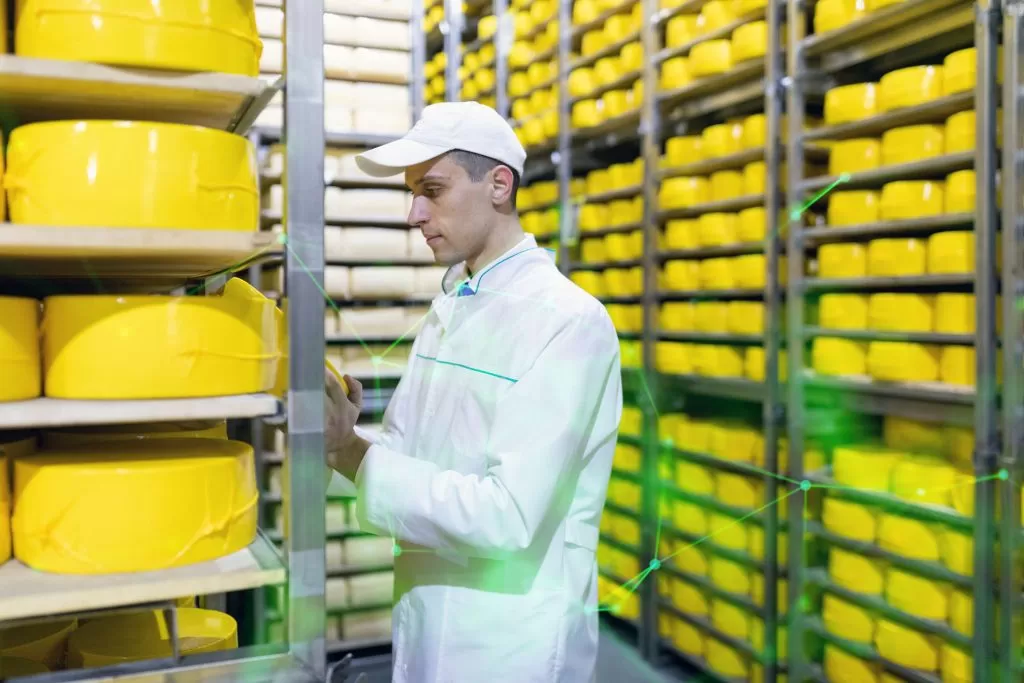
Food Safety and Multi-Temperature Load Handling.
Managing multi-temperature loads is a critical challenge in food delivery, as products often require different temperature settings – such as frozen, chilled or ambient. To ensure the quality and safety of products, temperatures must be maintained, whether goods are transported within a single vehicle with different temperature zones or across the fleet as a whole.
Sophisticated route planning and vehicle allocation strategies are needed to efficiently manage these requirements and to ensure that all products reach their destinations in optimal condition.
A TMS can optimise the loading of the vehicles so that items requiring similar temperature conditions are grouped together. This minimises the risk of cross-contamination and preserves the integrity of each product. Once on the road, vehicles can also be dynamically rerouted based on real-time data – such as to avoid congestion or to meet changed delivery schedules – in order to meet required delivery windows and to maintain temperature or humidity.
The ability to track transport conditions in real-time helps maintain the integrity of sensitive produce, which is crucial for complying with food safety regulations and in maintaining high standards of food quality and customer satisfaction.
A food distribution company uses Geo2 to actively monitor and record the temperatures inside its vehicles. Using the mobile app, drivers capture and upload photos as proof that the correct temperatures have been maintained. This feature could also be used to monitor and track other factors, like humidity, or to prove that goods have been protected correctly during transportation.
Mobile App for Greater Driver Efficiency.
A TMS with a complementary driver app helps make your drivers more efficient. With their routes optimised in advance and the ability to dynamically avoid traffic while out on the road, drivers can complete their deliveries more quickly.
Driver apps provide tools like barcode scanning and digital proof of delivery, which streamline the delivery process and reduce the likelihood of errors. An app can also guide drivers through their routes. They don’t need to input the next address into a separate map application or manually try to work out which stop they should make next. This speeds up delivery times and improves overall route efficiency.
With barcode scanning, drivers can quickly verify and select the correct parcels for each stop, reducing the risk of delivery errors. This is especially critical in food distribution, where delivering the right items in a timely manner directly impacts the quality and freshness of the products received.
A proof of delivery feature also collects a digital acknowledgment from the customer at the point of receipt, which is invaluable for verifying that a successful delivery has been made. It also supplies irrefutable evidence that will help in handling any disputes that may arise.
Collectively, these features in a mobile app enhance driver productivity as well as boost customer satisfaction by ensuring reliable and accurate deliveries.
Product and Package Level Claims.
Effectively resolving customer claims helps maintain good relationships and ensures ongoing loyalty. A TMS can help the claims process by providing detailed tracking and recording capabilities at both the package and product levels. This allows for precise identification and documentation of any issues, which facilitates quick and accurate resolutions. If a bulk shipment contains faulty items, the TMS can efficiently manage and document the claim, whether it involves returning an entire package or just specific products within it.
This is particularly effective in scenarios where there are large quantities with potential for minor, yet significant, defects. Consider a distributor that sells boxes of chocolates, where each box contains 100 packs of 10 chocolates each. If there’s a problem with all the packs, the TMS allows for a ‘package level’ claim where the whole box is returned.
If just one pack is faulty, a ‘product level’ claim will identify the specific faulty pack and return it without affecting the rest of the shipment. This is particularly effective where produce is concerned. For example, if a customer orders 360 eggs and finds on delivery that 10 are broken, the TMS can note this as an issue, allowing the distributor to issue a refund or replacement for just those 10 eggs, rather than the entire batch.
This level of granularity prevents customers from needlessly returning entire packages. If the entire batch is returned, its short shelf life may prevent it being resold. But by allowing your customers to easily refuse or return parts of an order, you reduce your potential losses. This also enhances trust as customers are assured that their specific concerns will be addressed promptly and accurately.
Proof of delivery also helps prevent fraudulent claims. Using the camera on their mobile device, your drivers can photograph goods to show that they were delivered in good condition. Plus, GPS coordinates and date and time stamps add extra proof. This can demonstrate, for example, that goods were delivered at a certain time and were within their use-by dates.
Fleet Maintenance and Reliability.
Keeping your fleet well-maintained ensures the reliability and efficiency of your deliveries. Vehicle check functionality ensures your drivers carry out regular and systematic inspections that you’re your vehicles are always in optimal condition. Taking a proactive approach to fleet management in this way minimises the risk that your lorries or vans might unexpectedly break down, reducing costly downtime and extending the lifespan of your fleet.
The vehicle check functionality in a TMS gives you a comprehensive overview of the status of each vehicle. It highlights any potential issues that need attention before they become more serious. By ensuring drivers undertake regular checks, you can identify and address any wear and tear issues and ensure that safety standards are met.
With food distribution, timely deliveries are critical in avoiding spoilage and maintaining product quality. With systematic vehicle checks, you have an assurance that your fleet will always be reliable and able to meet the demands of a rigorous delivery schedule. By keeping your vehicles running smoothly, you can consistently deliver quality goods on time, which keeps your customers happy.
Addressing Seasonality Challenges With Load Optimisation.
Demand peaks can strain your fleet capacity and operational efficiency. Using load optimisation techniques, a TMS can manage the impacts of these seasonal fluctuations. Even when vehicle capacity becomes tight, a TMS can determine the most effective way of using capacity, ensuring that all orders can be delivered.
Using the data about your vehicles, a TMS can automatically calculate the best way to load your fleet. By determining the best combination of orders for each route, you can maximise the capacity of each vehicle while also minimising the number of trips needed. For example, during a peak time such as Christmas, where order volumes might increase dramatically, a TMS can strategically group deliveries based on the proximity of each destination or according to which vehicles are compatible with transporting certain product types.
This ensures that your vehicles are loaded in a way that makes the most of the available space and also preserves the condition of the goods, reducing the likelihood of product damage or spoilage.
Enhanced Profitability.
Maintaining profitability in food distribution requires that you are on top of every aspect of your supply chain. By automating and refining your logistics processes, a TMS can help reduce your operational costs, improve the efficiency of your drivers and enhance the quality of your delivery service.
A TMS directly impacts profitability by reducing fuel consumption and improving driver productivity. You can plan optimised routes that take account of traffic patterns, delivery windows and vehicle capacity, ensuring that your deliveries are as efficient as possible. This not only cuts down on fuel costs, but also reduces vehicle wear and tear, extending the lifespan of your fleet and reducing your maintenance costs.
By automating tasks like route planning and delivery scheduling, a TMS frees up your employees’ time. This could save you hundreds of work hours a year – which could potentially translate into thousands of pounds in savings. There are also savings to be made by reducing paper usage. By replacing its manual delivery system with an automated TMS, one Geo2 customer was able to cut its annual paper costs by around £30,000.
With enhanced data reporting and analytics, you get insights into your operational performance, which help you make informed decisions that further drive your profitability. For example, by analysing delivery routes and times, you can identify potential improvements. Tracking driver performance might highlight areas for training or efficiency gains.
Using the capabilities of a TMS, you can deliver quality goods on time, meeting or exceeding your customers’ expectations and securing their repeat business. By minimising your costs and maximising your returns, a TMS will help grow your profit margins.

Conclusion: Using a TMS for Sustained Growth and Efficiency in Food Distribution.
The challenges facing food and drink distributors today demand robust solutions that can streamline operations and bolster resilience. A TMS such as Geo2 offers precisely this kind of support, transforming your operational headaches into opportunities for efficiency and growth.
External pressures such as market volatility, economic fluctuations and the unpredictable challenges posed by the weather and the geopolitical landscape require food distributors to have the agility to respond and adapt quickly. With a TMS, you can adjust routes in real-time, react promptly to supply chain disruptions and maintain communication with drivers and customers. In this way, you can ensure the freshness and safety of perishable goods and meet the strict regulatory standards of the industry. With the integrity of your supply chain maintained, you are better safeguarded against these outside influences.
At the heart of effective distribution is the ability to meet and exceed customer expectations. A TMS bolsters these capabilities by ensuring deliveries are accurate, on time and handled with the utmost care. By enhancing the factors that build trust and loyalty among customers, you give yourself a better foundation on which to build long-term business success.
As technology continues to advance and the food distribution sector grows ever more competitive, investing in a TMS is not just about solving current problems, but also about preparing for future challenges. A TMS equips you with the tools to scale your operations, explore new markets and make continuous process improvements.
The long-term benefits of a TMS range from cost savings and improved operational efficiency to enhanced customer satisfaction and regulatory compliance. A TMS delivers an excellent return on your investment – both financially and through less tangible gains, such as increased reliability and strengthened brand reputation.
The future of food distribution is digital and a TMS will put you at the forefront of this transformation, paving the way for greater efficiency and sustained growth.





